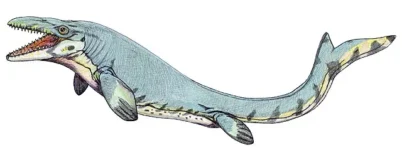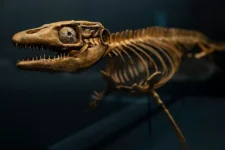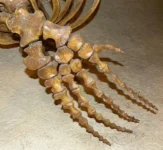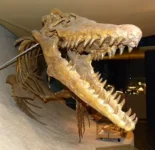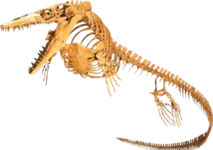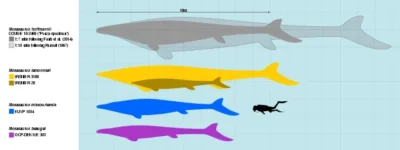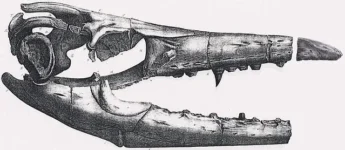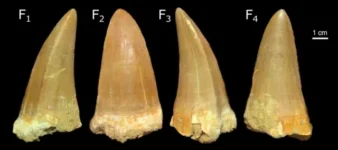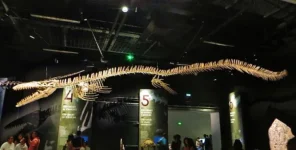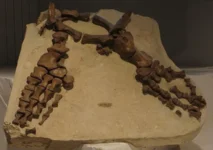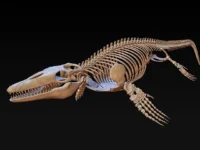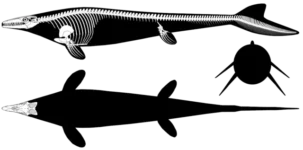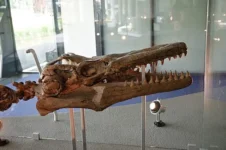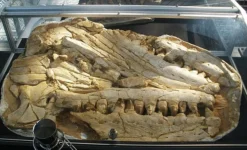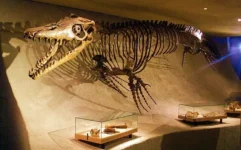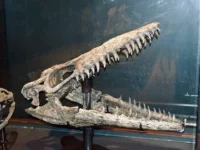Mosasaurus
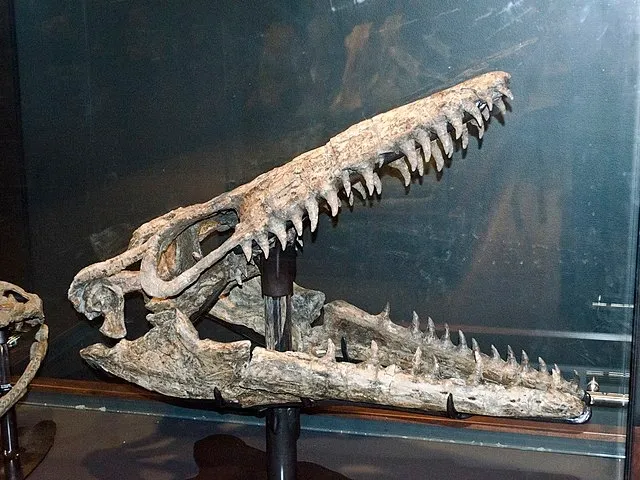
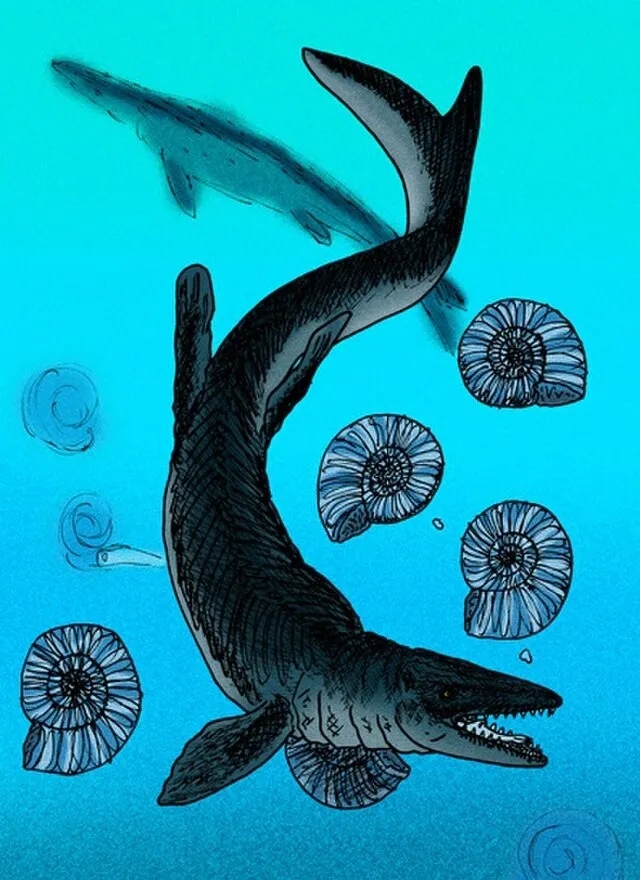
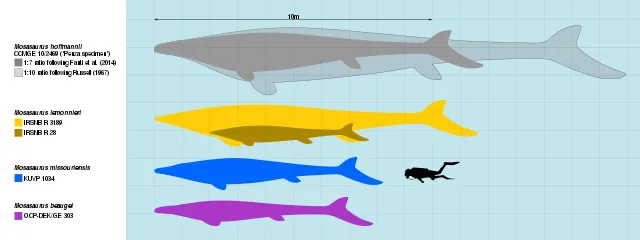
MOSASAURUS
Mosasaurus was a large, marine reptile that lived during the late Cretaceous period, approximately 82 to 66 million years ago. Mosasaurus is significant for its role in the history of paleontology, as its discovery helped to establish the concept of extinction and contributed to the understanding of marine reptiles. It also provides insights into the diversity and adaptations of marine life during the Cretaceous period. Here are some key details about Mosasaurus:
SIZE AND ANATOMY:
- Size: Mosasaurus was one of the largest mosasaurs, growing up to 56 feet (17 meters) in length, though some estimates suggest it could reach lengths of up to 60 feet (18 meters).
- Weight: It weighed around 15 tons.
- Skull and Teeth: Mosasaurus had a large, robust skull with a strong jaw filled with sharp, conical teeth, perfect for grasping and holding onto slippery prey.
- Limbs: Its limbs had evolved into flippers, with large paddle-like appendages for steering. It also had a powerful tail with a fluke, similar to that of modern sharks, which provided propulsion through the water.
DIET AND FEEDING BEHAVIOR:
- Diet: Mosasaurus was a carnivore, preying on a variety of marine animals, including fish, squid, ammonites, and even other marine reptiles. Its powerful jaws and teeth allowed it to tackle large prey.
- Hunting Techniques: It was an apex predator in its environment, using its speed and agility to chase down prey. The powerful tail allowed for swift bursts of speed, and its sharp teeth ensured a firm grip on its prey.
- Habitat: Mosasaurus inhabited the shallow, warm seas that covered much of Europe and North America during the late Cretaceous. Fossils have been found in marine deposits, indicating it lived in open ocean environments.
FOSSILS AND DISCOVERY:
- First Discovery: The first Mosasaurus fossils were discovered in the late 18th century in the Netherlands, near the Meuse River (from which it gets its name). These fossils played a crucial role in early paleontology.
- Significant Finds: Numerous Mosasaurus fossils have been found in Europe and North America, including complete skeletons and well-preserved skulls, providing extensive information about this marine reptile.
CLASSIFICATION
- Order: Squamata
- Family: Mosasauridae
- Genus: Mosasaurus
- Species: The most well-known species is Mosasaurus hoffmannii..
FUN FACTS:
- Not a Dinosaur: Despite its appearance in popular media alongside dinosaurs, Mosasaurus was not a dinosaur. It was a marine reptile, more closely related to modern lizards and snakes.
- Pioneering Fossil: The discovery of Mosasaurus fossils in the late 18th century was one of the first major fossil finds to be studied scientifically. It helped pave the way for the field of paleontology and the concept of extinction.
- Powerful Swimmer: Mosasaurus had a hydrodynamic body shape and a powerful tail fin, allowing it to be an efficient and fast swimmer. This made it a top predator in its marine ecosystem.
- Evolutionary Adaptations: Over time, Mosasaurus and other mosasaurs evolved features suited for marine life, such as reduced limb bones that formed flippers and a streamlined body. These adaptations highlight the evolutionary transition from land-dwelling ancestors to fully aquatic reptiles.
